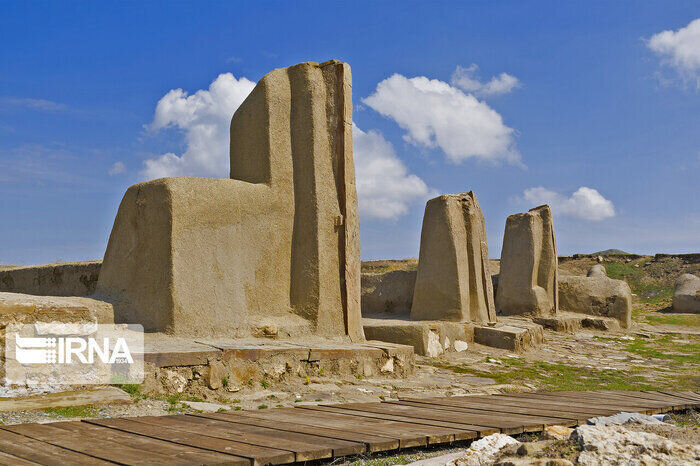11,000 tourists visit ancient Hasanlu Hill

TEHRAN—About 11,000 tourists visited ancient Hasanlu Hill and the museum of identified relics in this hill, West Azarbaijan province, during the current Iranian year that started March 21, said Hassan Shiri, director of the ancient site.
He told IRNA that visits to Hasanlu hill grew by 20 percent this year, adding that the highest number of visits occurred during the Nowruz holidays.
In addition to the hill, Hasanlu International Wetland, Hasanlu Castle, and Hasanlu Dam are historical and natural attractions visited by tourists, he said.
He also said that apart from domestic tourists, tourists from Turkey, China, and Japan visited the ancient site this year.
In addition to the Hasanlu site, the museum of unearthed artifacts, which includes hundreds of ancient objects such as pottery, bronze, stone, bone artifacts, and war tools, is open to visitors, he pointed out.
The ancient village of Hasanlu in northwest Iran is nearing completion of its dossier for inscription as one of the Best Tourism Villages, a prestigious label by UN Tourism.
Hasanlu is among eight Iranian villages nominated for the UN Tourism’s 2025 recognition list, said a senior official from the Ministry of Cultural Heritage, Tourism and Handicrafts last April.
Speaking during a recent visit to the village, Seyyed Mostafa Fatemi, Director General of Domestic Tourism at the ministry, described Hasanlu as “a mirror reflecting the full spectrum of historical tourism attractions.”
The official emphasized the village’s rich blend of cultural heritage, tourism potential, and handicraft production.
“Hasanlu possesses outstanding capacities in cultural heritage, eco-tourism, and nature-based attractions,” Fatemi said. “The presence of an ancient Hasanlu Hill, one of the oldest known civilizations, significantly elevates the historical status of the village.”
He also noted the village’s diverse offerings, including locally crafted handicrafts, nearby wetlands that serve as birdwatching havens, and a growing number of tourism facilities. These, he said, enhance Hasanlu’s appeal to both domestic and international travelers.
Fatemi further highlighted the village’s strengths in sustainable development, citing its economic, social, and environmental stability, as well as the preservation of cultural and historical assets.
According to the Britannica Encyclopedia, Hasanlu was inhabited from about 2100 to about 825 BC, but the richest period yet excavated dates to the 10th and 9th centuries BC. The period, often called “Mannaean” after the name of the people who lived in the area, is characterized by gray pottery accompanied by black and red varieties, the black ware being of a much finer quality and probably made in imitation of metal vessels
Experts say parallels to the motifs on the Hasanlu objects have been found in Elam, Assyria, north Syria, and Urartu, indicating that Iran not only received considerable cultural and artistic stimuli from other areas but also, in turn, exerted influence on the Middle East.
The excavations have revealed important knowledge about the prehistory of northwestern Iran, particularly during the late 2nd and early 1st millennia BC.
KD
Leave a Comment